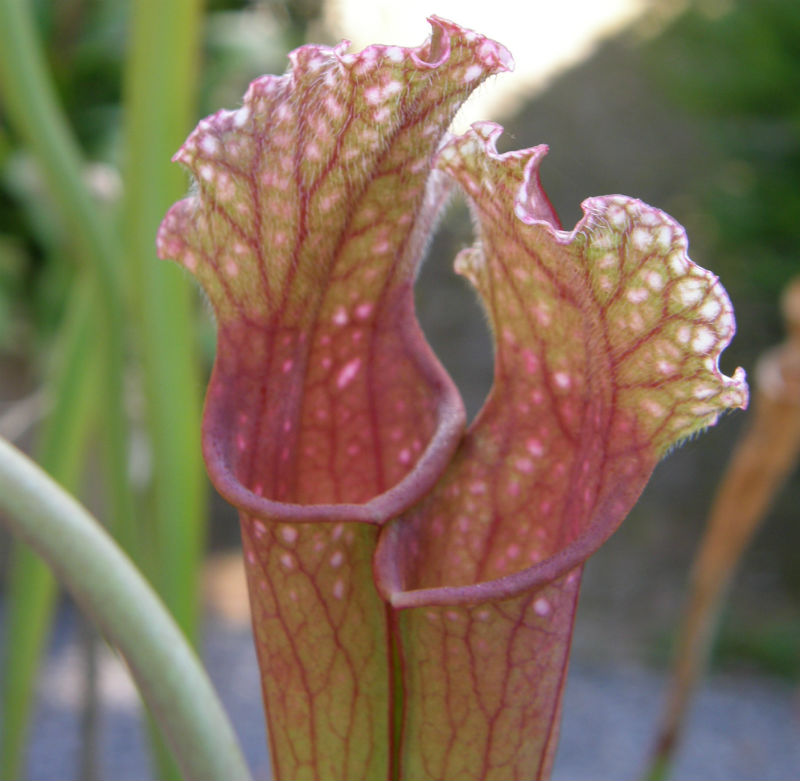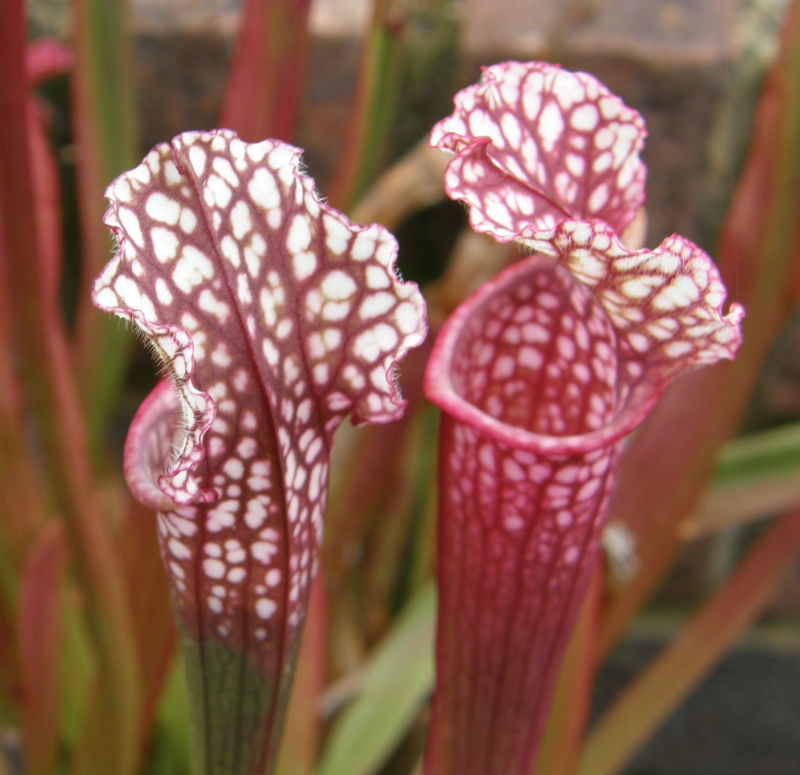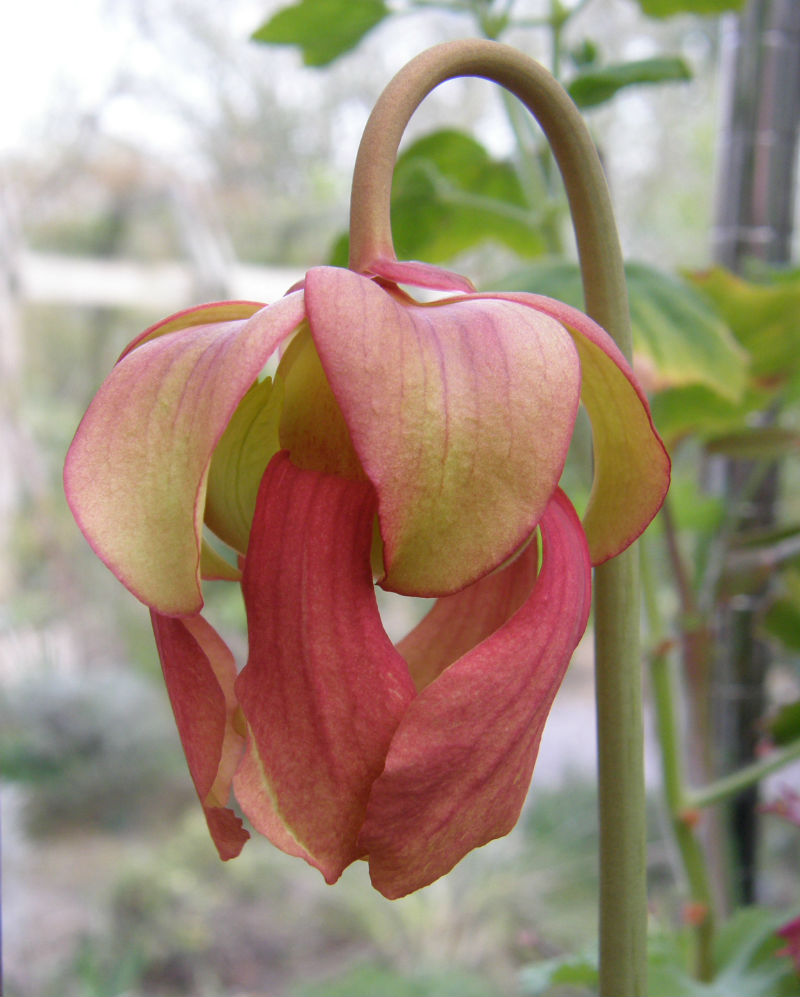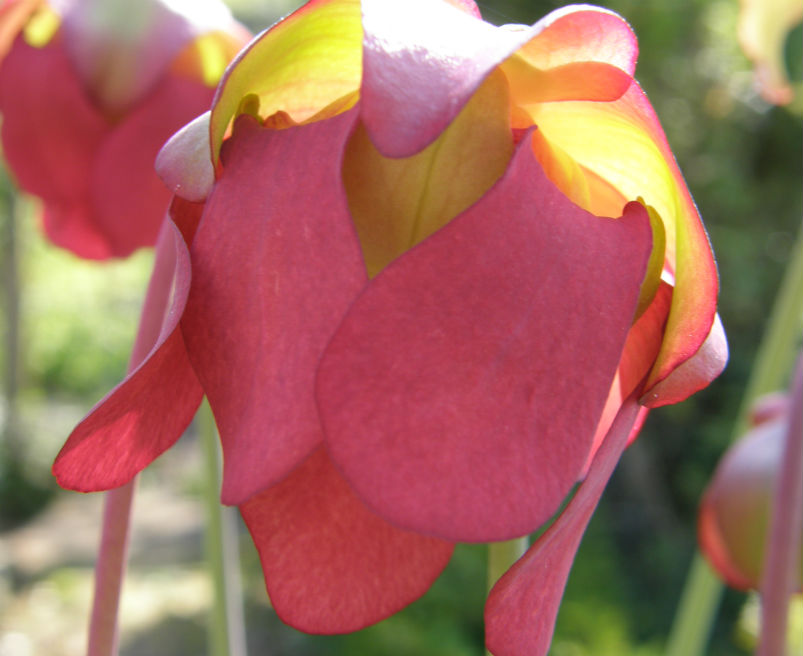I do remember years ago poring over my brother’s copy of Adrian Slack’s book ‘Carnivorous Plants’ and admiring the pitcher plants. But I made a pact with myself that I would stick with sundews (Drosera), pitcher plants (Sarracenia), would be a step too far down the insectivorous plant path.
About 15 years ago I bought a small un-named pitcher plant from Homebase from one of those little cardboard point-of-sale displays which included Venus Flytraps to attract children’s pocket money. I still have that plant, but after that, no more, I said to myself.
There are around 8 species of North American sarracenia growing in boggy habitats ranging from Florida in the south to Canada, S purpurea is said to be the hardiest. As you might expect, many of these bog dwellers habitats in the wild are under threat, and I admit that I have been buying peat-based specialist compost which is somewhat ironic.
Going forward I am going to try a mix recommended by Shropshire Sarracenias, (UK National Collection holders) of 2 parts bark-based medium such as Melcourt, 1 part Cornish grit and 1 part perlite.
Temptation
Temptation finally got the better of me. When I buy compost from Hampshire Carnivorous Plants for my drosera, I can’t help but add a pitcher plant to the basket as well. None of the flashy expensive hybrids though.
The sarracenia hybrids I have are easy to grow. Most of them are over-wintered in a cool conservatory (min 7C). The two in the unheated greenhouse take longer to get going in spring and look tattier due to their harsher winter regime.
In spring the wizened trumpets containing dried up fly remains are cut back. I re-pot in spring or late summer generally. They then go out for the summer, the pots standing permanently in trays of water,* to top up on insects which they need to survive. This insectivorous habit developed to give the plants nutrients lacking in their boggy domains.
It would be fun to have a boggy area in the garden where pots of pitcher plants could be popped in for the summer. I did suggest to someone who does have a lovely wild bog that it would be fun to do – the idea didn’t go down that well, oddly not everyone appreciates sarracenia!
And yes, I do sometimes feel sorry for an unwitting fat fly as it slips down, the buzzing amplified by the trumpet. To be fair though, not all succumb to the lure of free food!







* I do use tap water although it’s recommended that only rainwater should be used. Our tap water comes from an aquifer on chalky Salisbury Plain so not exactly ideal.

